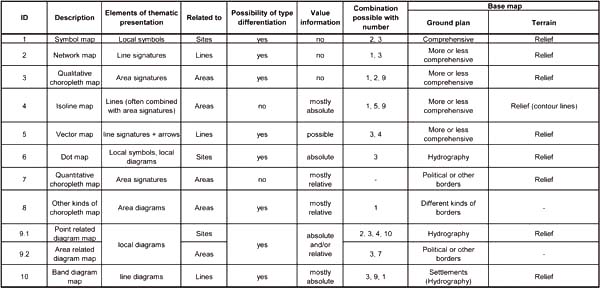|
|
|
|
|
|
Mapping techniques for thematic maps
There are several different methods to map spatial-thematic information. Depending on the characteristics of the data a more local, linear or areal representation is suitable. Imhof (1972) subdivides thematic maps by structure types. Examples of cartographic structures are point distributions, area classes, isolines, networks and others. The following table shows structure types of thematic maps (Hufnagel) according to Imhof (1972).
In the following sections specific types of thematic maps are presented.

